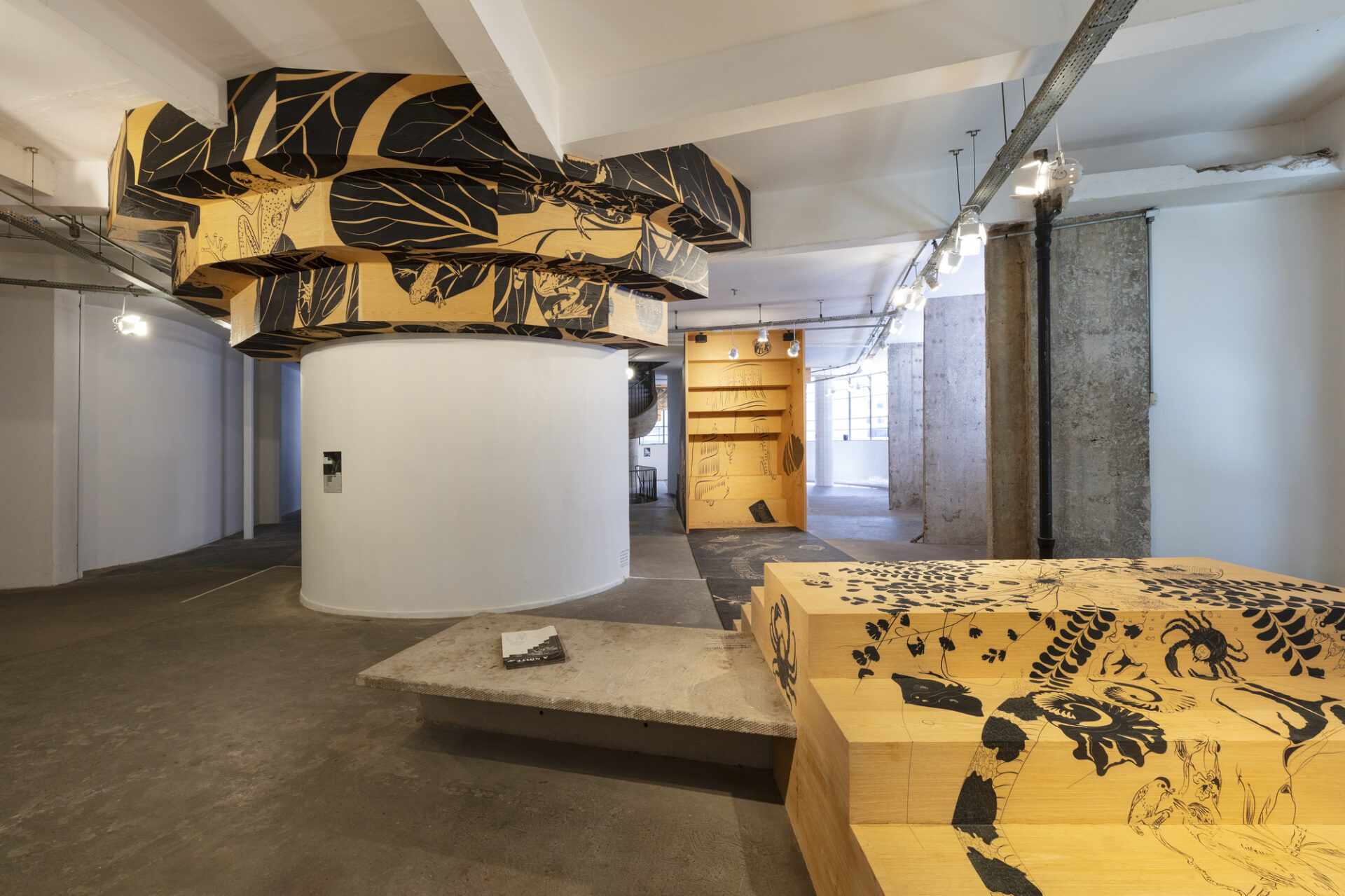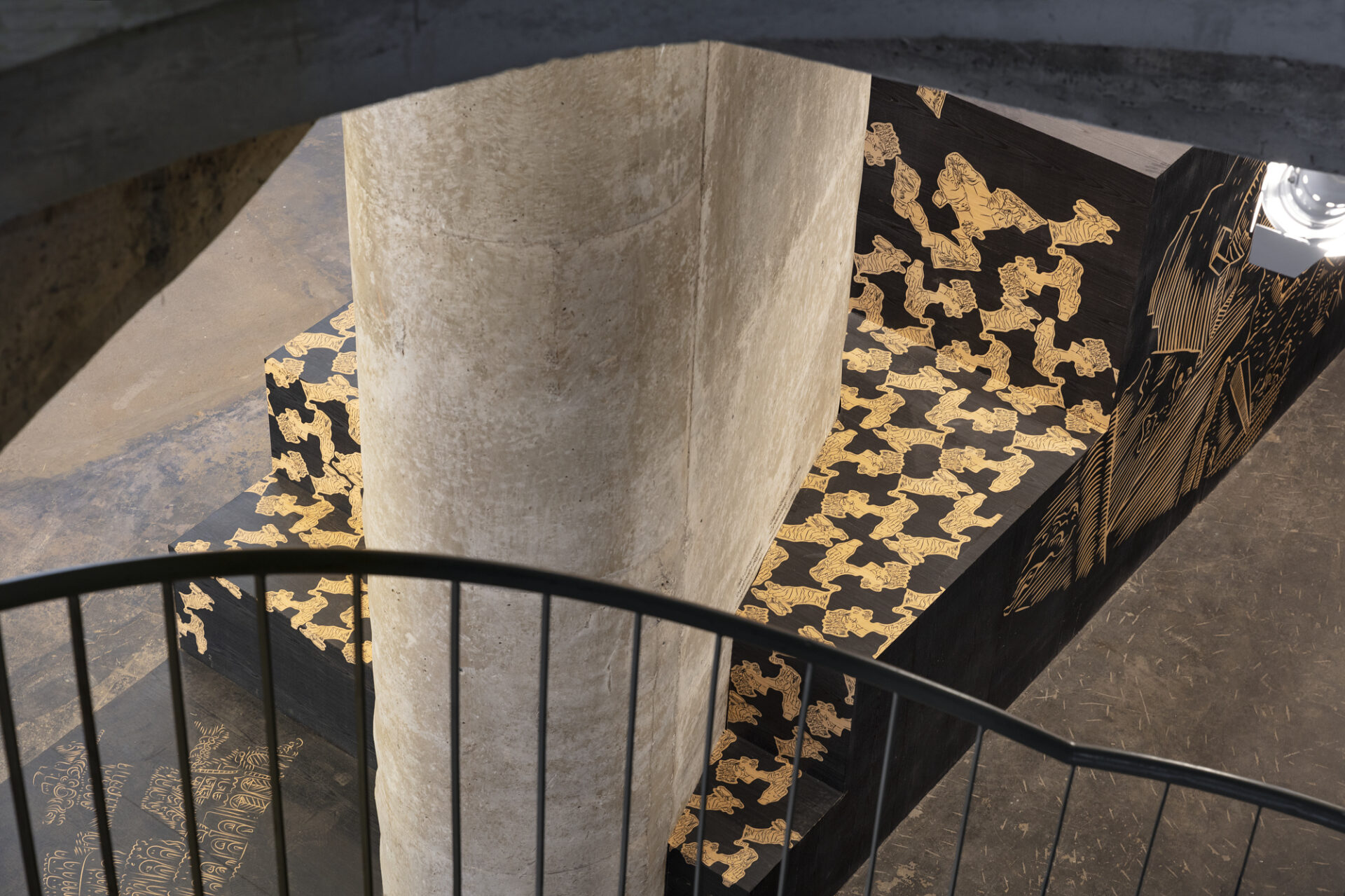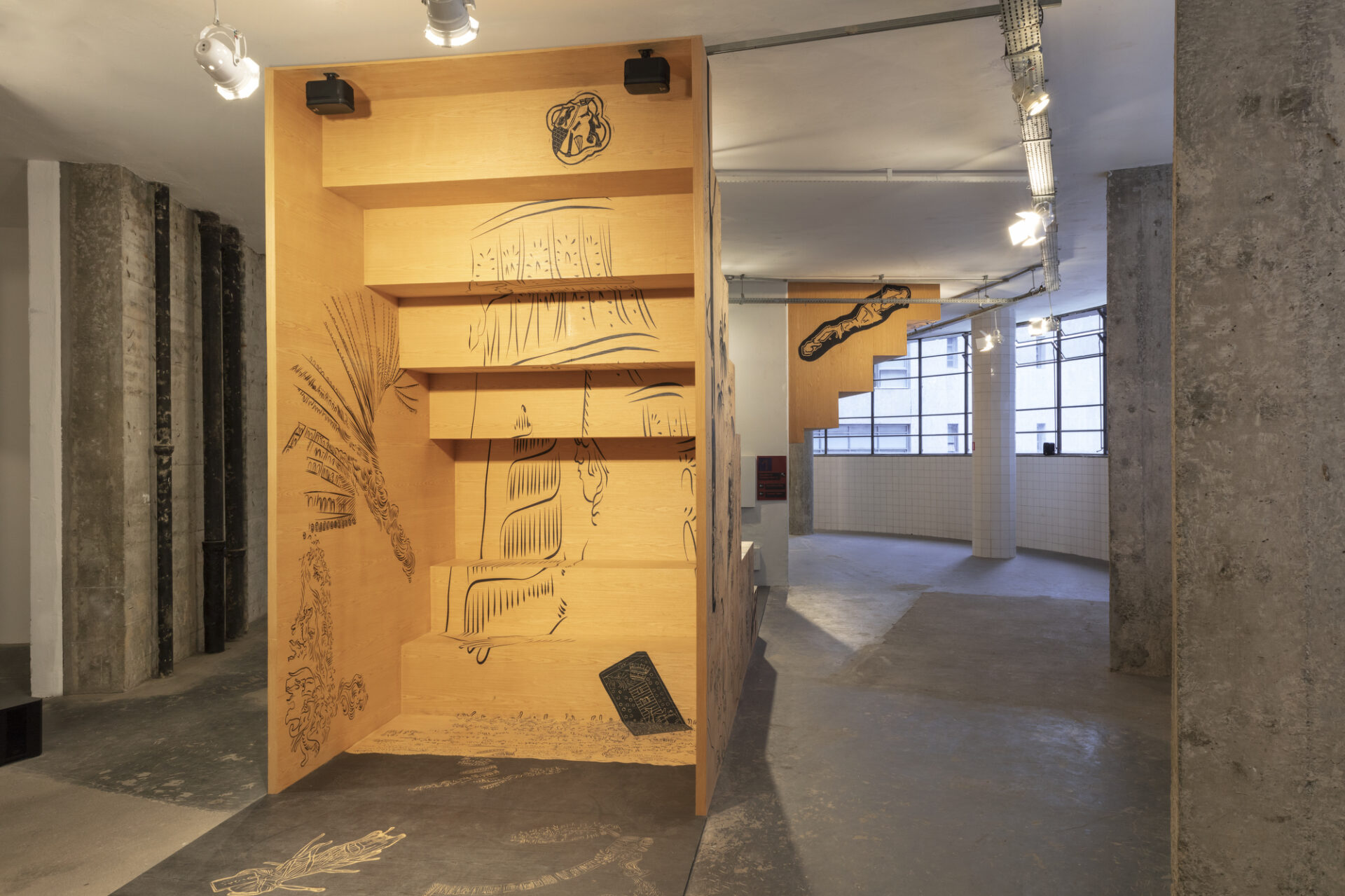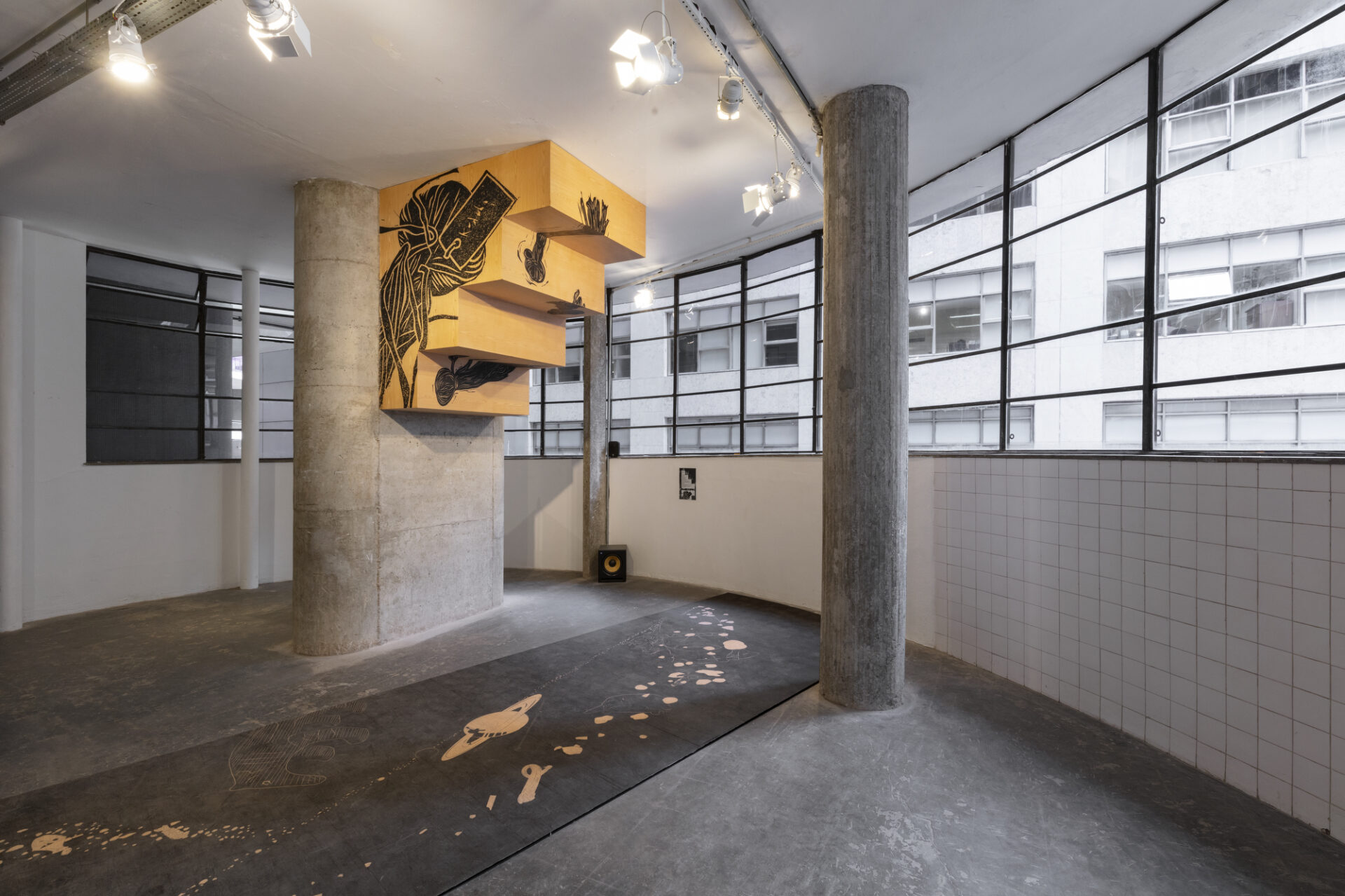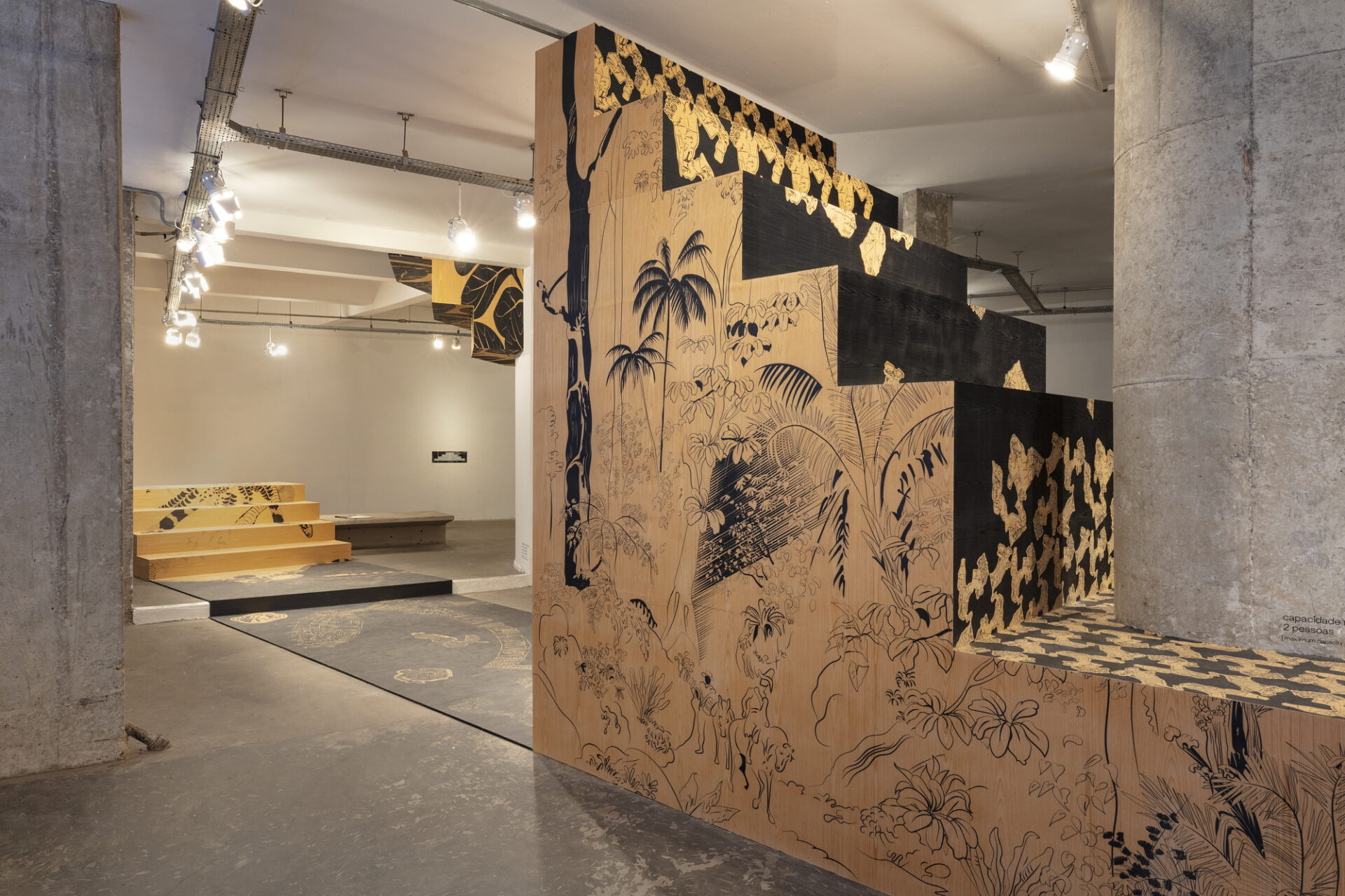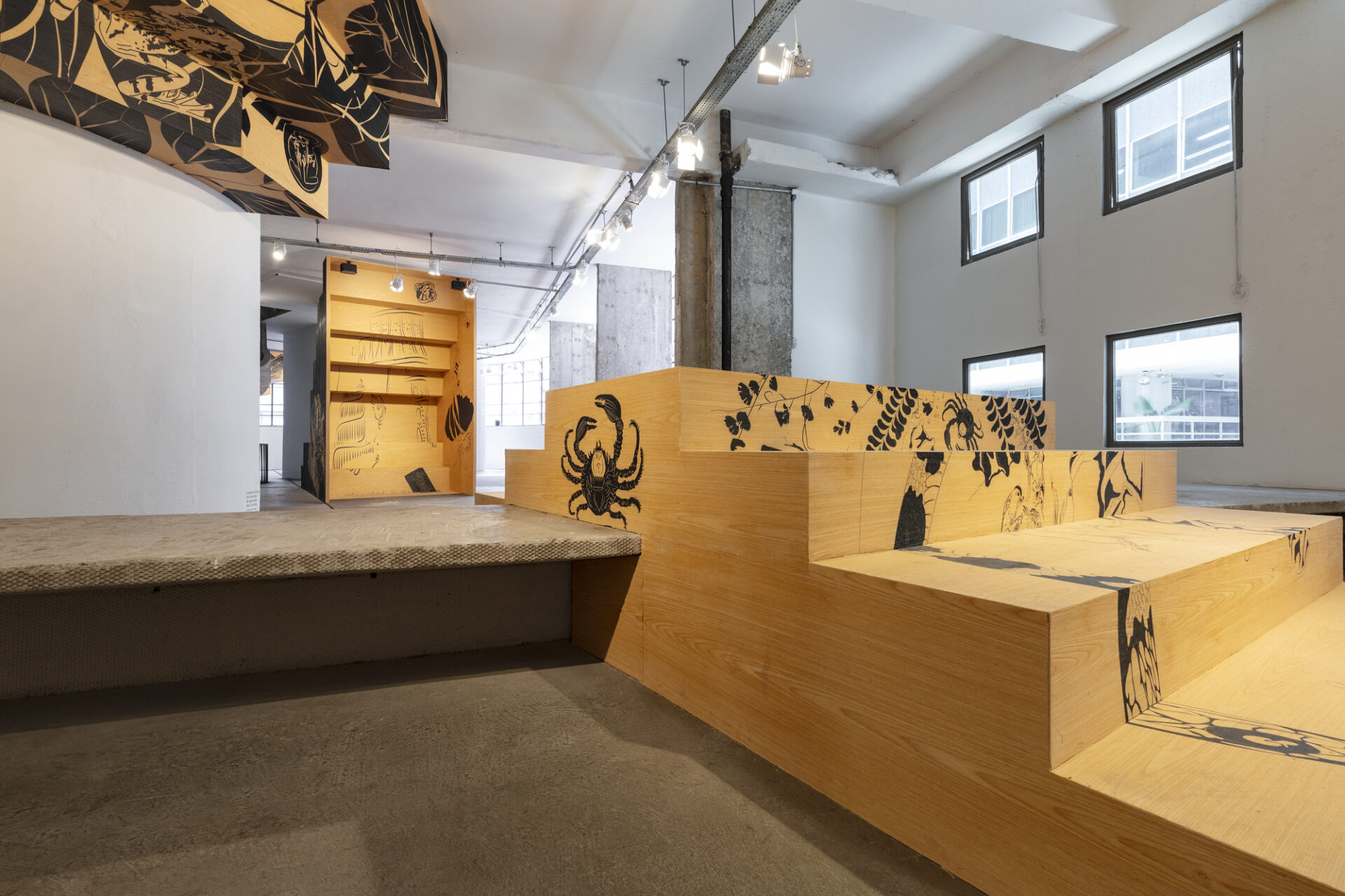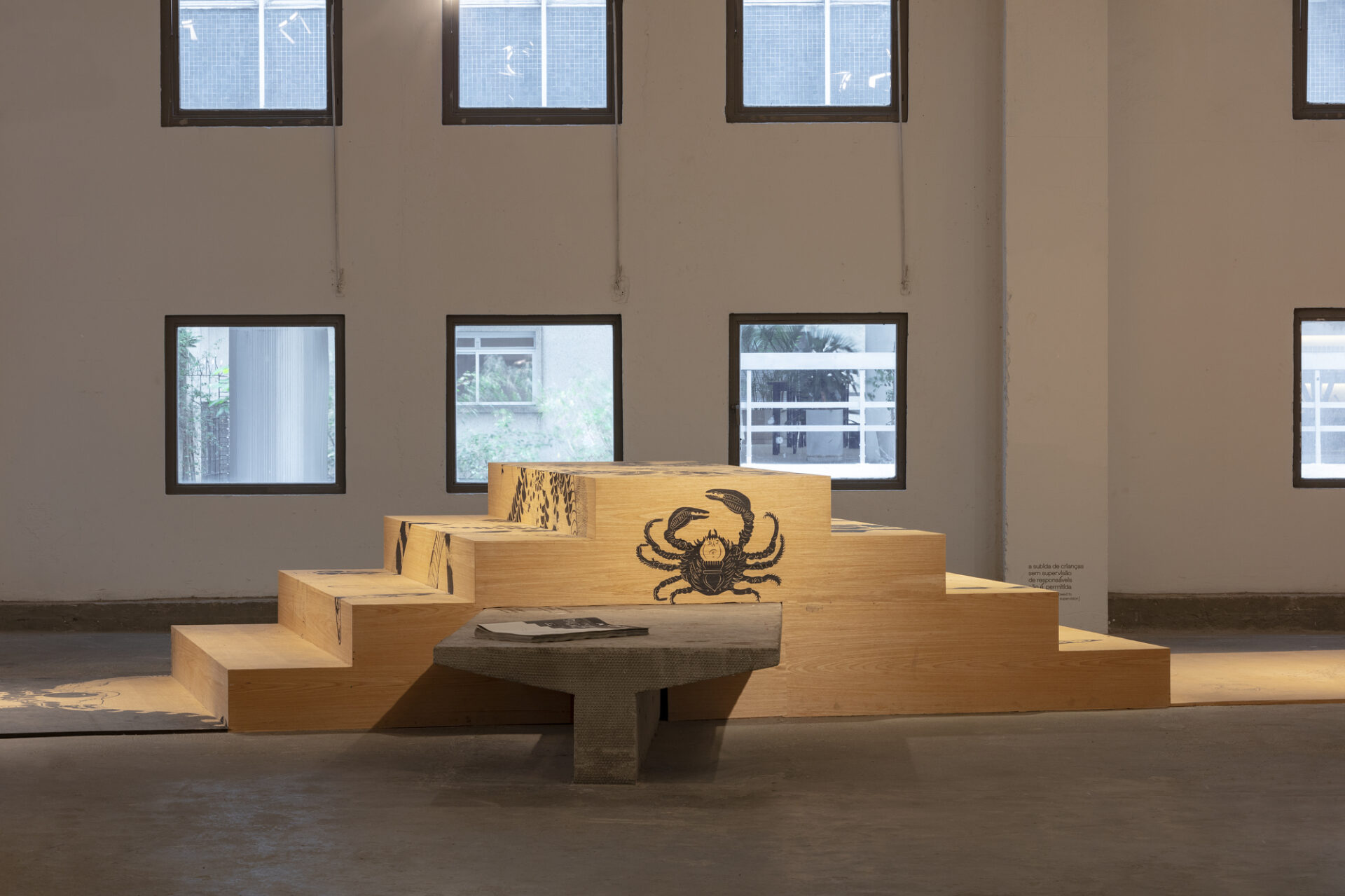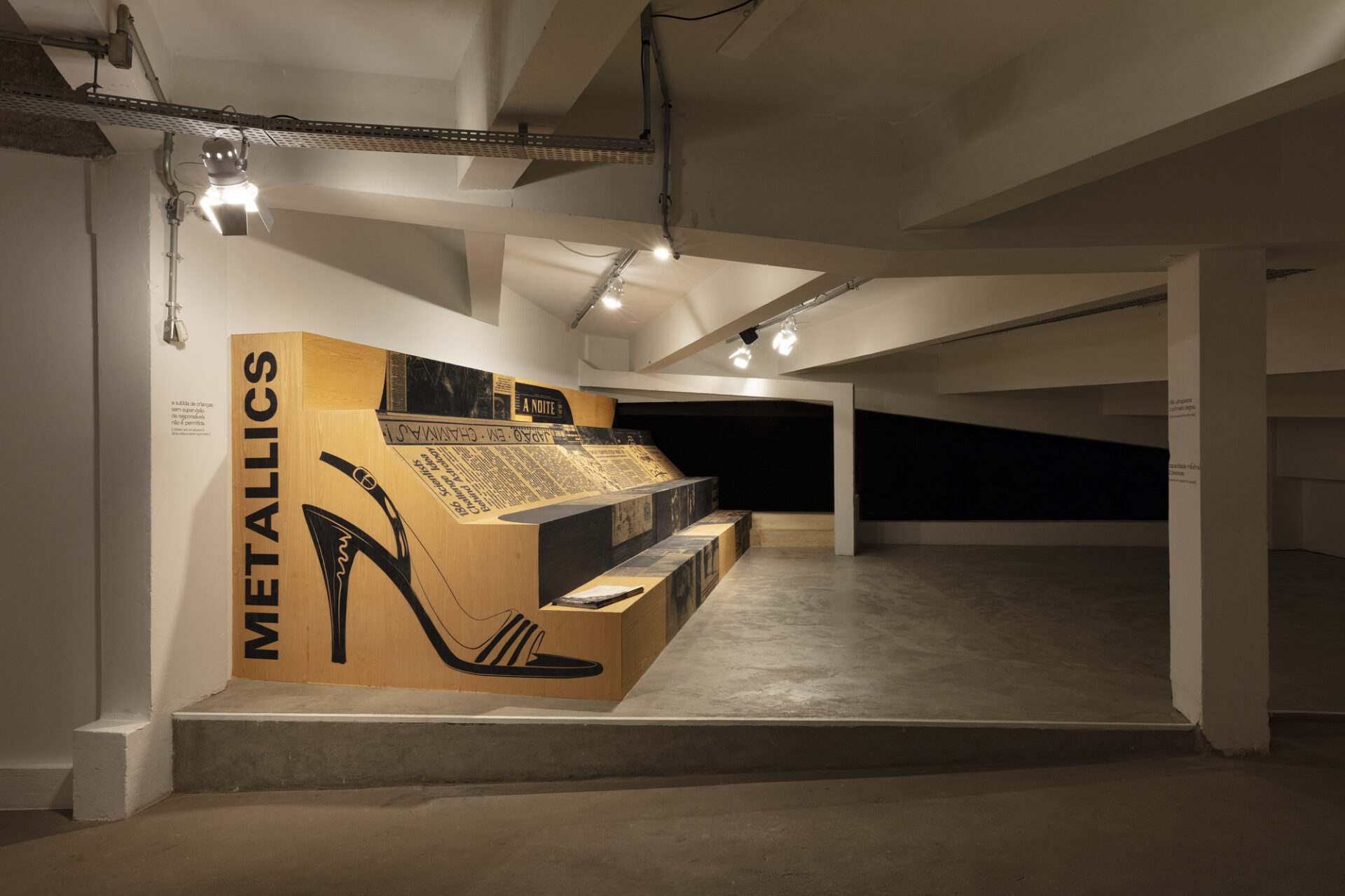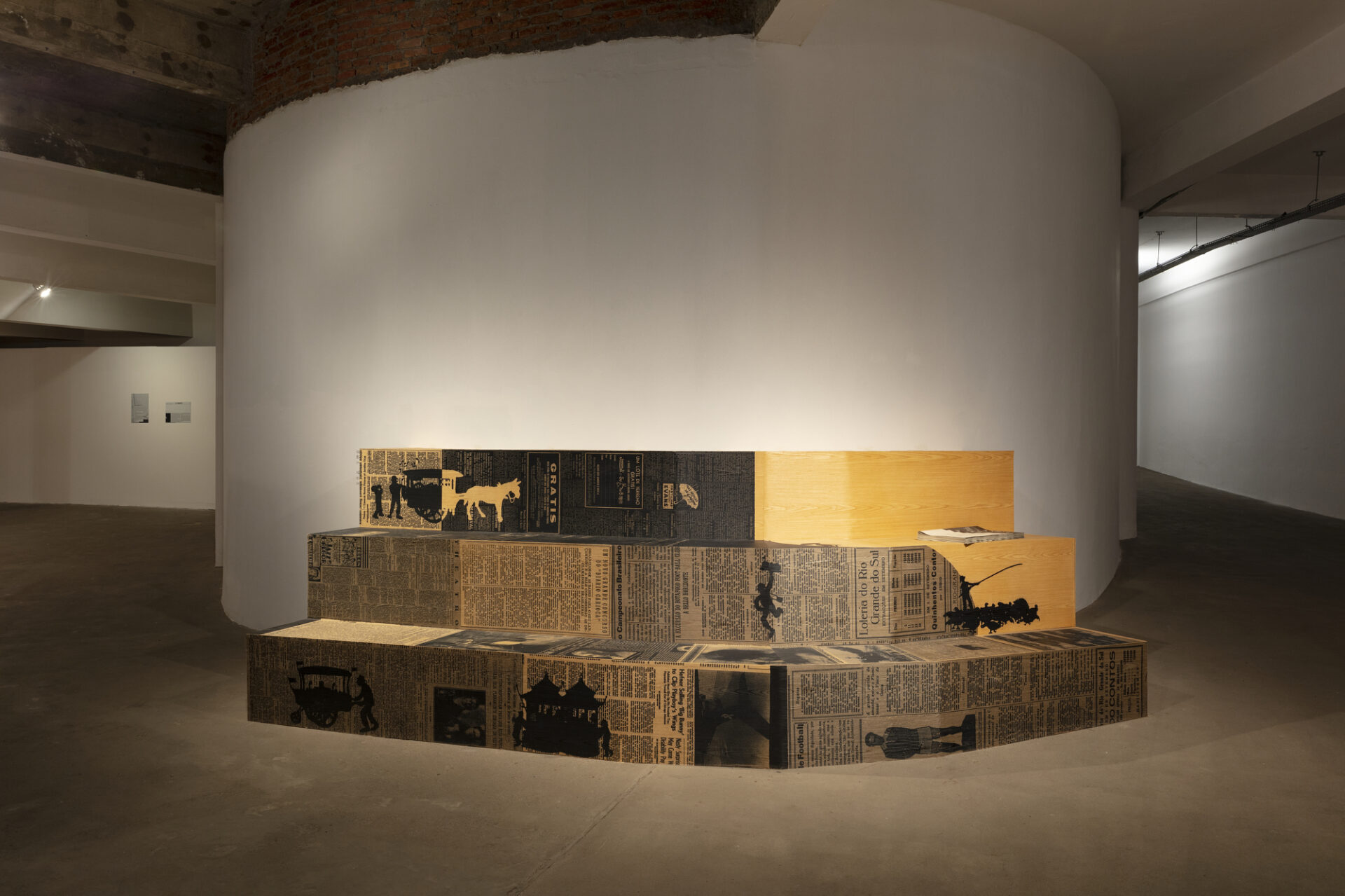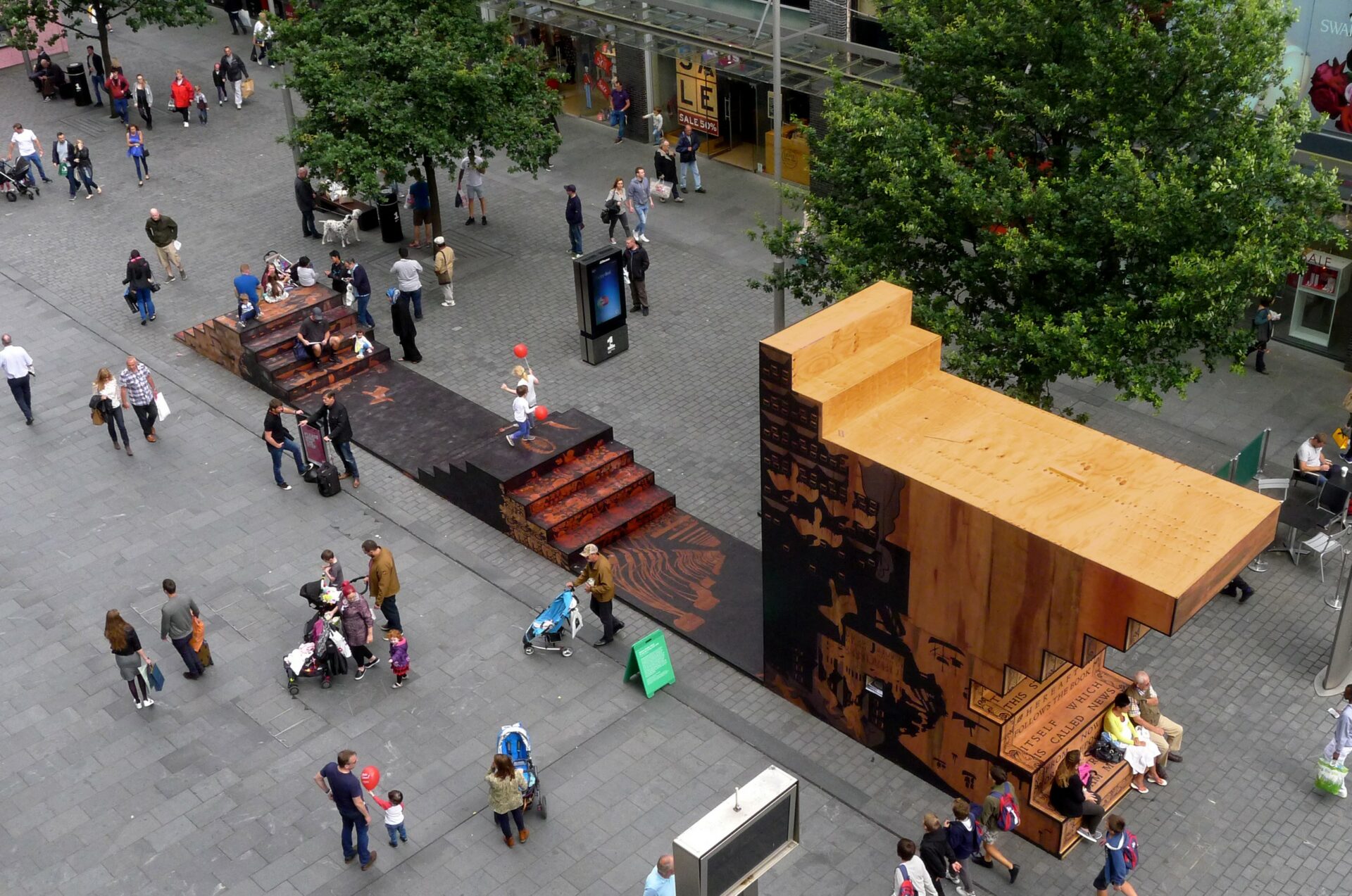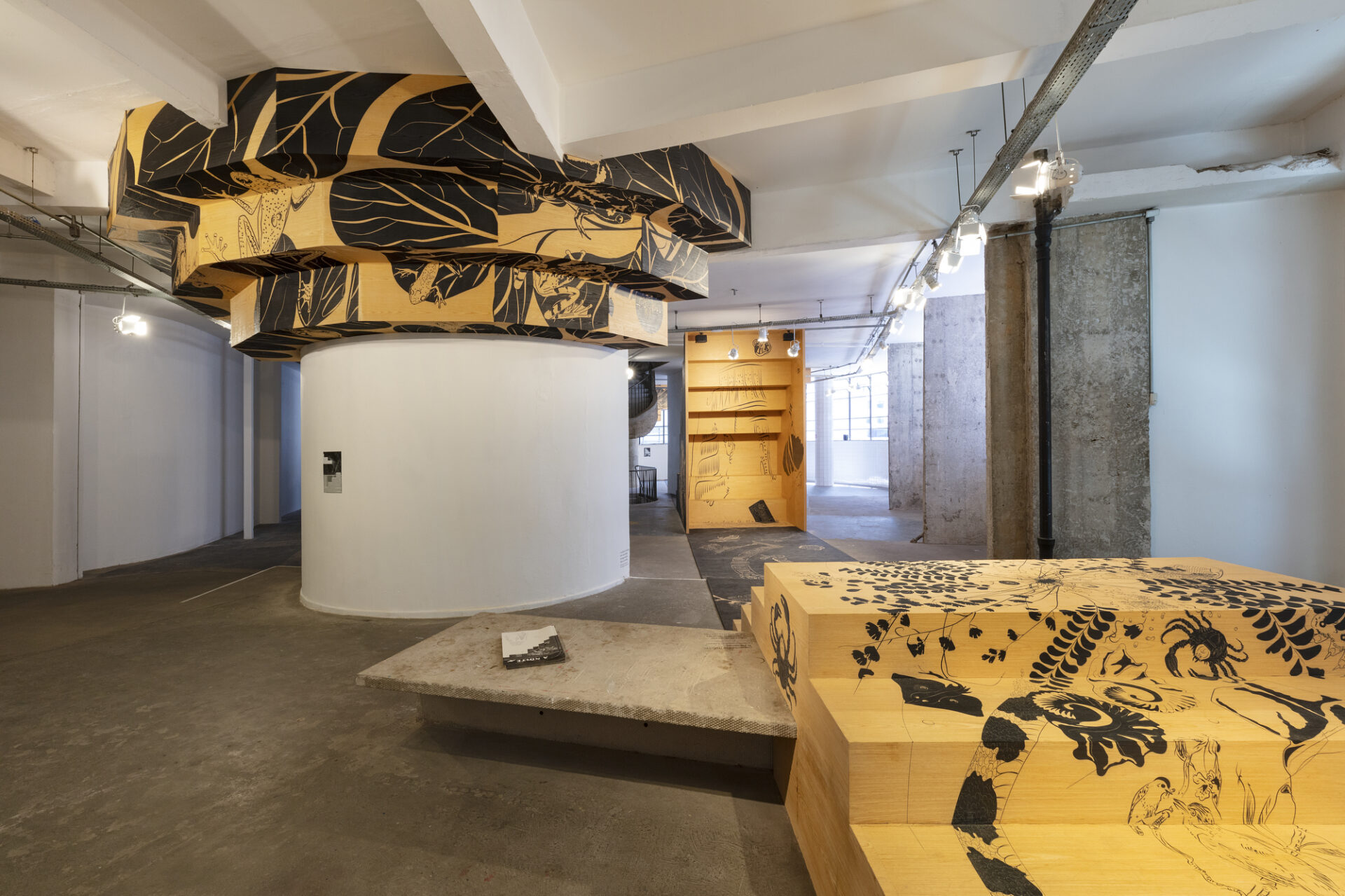
Pivô will host an unprecedented exhibition by Mexican artist Mariana Castillo Deball starting from September 2nd. The exhibition is curated by Fernanda Brenner, artistic director of Pivô, and Ana Roman, Pivô’s curator.
Mariana Castillo Deball brings to Pivô an edition of the TO-DAY project, previously exhibited at the Liverpool Biennial and the Savannah College of Art and Design Museum. At Pivô, the project edition is titled “A Noite” (The Night).
The project comprises a large stage-like installation that occupies the main exhibition space of Pivô, along with a kind of newspaper. The installation features a fictional character who exists only on one specific day, over the years. This character can freely navigate this date across different years, moving back and forth within a 24-hour time span.
The artist takes September 2nd as the starting point. This date, which marks the opening of her first solo exhibition in Brazil, is also marked by the 2018 fire at the National Museum in Rio de Janeiro. Deball indirectly revisits the remains of the collection at the National Museum after the 2018 fire. The 20 million cataloged items that disappeared and the remaining traces of their existence serve as the starting point for a reflection on memory and museological devices.
In the installation, Deball fictionalizes real events from September 2nd while incorporating sounds and songs collected from folk and popular survey expeditions, such as those collected by the 1938 Folklore Research Missions undertaken by Mário de Andrade during his tenure at the São Paulo Department of Culture. Throughout the installation, there are events that encompass the life of a country on the periphery of capitalism, combined with international events – some of which are imbued with humor. The viewer is invited to sit or move around in this kind of public square created by the artist.
Throughout her work, Castillo Deball reveals the fissures and complexities of the colonial museum apparatus, prompting us to rethink not only what was lost in the fire but also what is constantly obscured and silenced. Through this exhibition and her body of work in general, the artist reminds us of the importance of reconstructing these devices, seeking a more inclusive and truly representative understanding of culture and history. Deball is interested in how knowledge and culture are produced, represented, and disseminated. Since her early works, the artist has sought to understand how chance – a result of the passage of time, erosion, fragmentation, and human intervention, among other factors – greatly influences how we acquire knowledge about the world and construct narratives. This interest has led her to examine the history of certain artifacts and their transformations, reproductions, appropriations, and disappearances.
A Noite
Mariana Castillo Deball
Curated by Fernanda Brenner
Cocurated by Ana Roman
Opening
Saturday, September 2nd, 2023
From 1PM to 7PM
Free Admission
Pivô will host an unprecedented exhibition by Mexican artist Mariana Castillo Deball starting from September 2nd. The exhibition is curated by Fernanda Brenner, artistic director of Pivô, and Ana Roman, Pivô’s curator.
Mariana Castillo Deball brings to Pivô an edition of the TO-DAY project, previously exhibited at the Liverpool Biennial and the Savannah College of Art and Design Museum. At Pivô, the project edition is titled “A Noite” (The Night).
The project comprises a large stage-like installation that occupies the main exhibition space of Pivô, along with a kind of newspaper. The installation features a fictional character who exists only on one specific day, over the years. This character can freely navigate this date across different years, moving back and forth within a 24-hour time span.
The artist takes September 2nd as the starting point. This date, which marks the opening of her first solo exhibition in Brazil, is also marked by the 2018 fire at the National Museum in Rio de Janeiro. Deball indirectly revisits the remains of the collection at the National Museum after the 2018 fire. The 20 million cataloged items that disappeared and the remaining traces of their existence serve as the starting point for a reflection on memory and museological devices.
In the installation, Deball fictionalizes real events from September 2nd while incorporating sounds and songs collected from folk and popular survey expeditions, such as those collected by the 1938 Folklore Research Missions undertaken by Mário de Andrade during his tenure at the São Paulo Department of Culture. Throughout the installation, there are events that encompass the life of a country on the periphery of capitalism, combined with international events – some of which are imbued with humor. The viewer is invited to sit or move around in this kind of public square created by the artist.
Throughout her work, Castillo Deball reveals the fissures and complexities of the colonial museum apparatus, prompting us to rethink not only what was lost in the fire but also what is constantly obscured and silenced. Through this exhibition and her body of work in general, the artist reminds us of the importance of reconstructing these devices, seeking a more inclusive and truly representative understanding of culture and history. Deball is interested in how knowledge and culture are produced, represented, and disseminated. Since her early works, the artist has sought to understand how chance – a result of the passage of time, erosion, fragmentation, and human intervention, among other factors – greatly influences how we acquire knowledge about the world and construct narratives. This interest has led her to examine the history of certain artifacts and their transformations, reproductions, appropriations, and disappearances.
A Noite
Mariana Castillo Deball
Curated by Fernanda Brenner
Cocurated by Ana Roman
Opening
Saturday, September 2nd, 2023
From 1PM to 7PM
Free Admission

 Português
Português